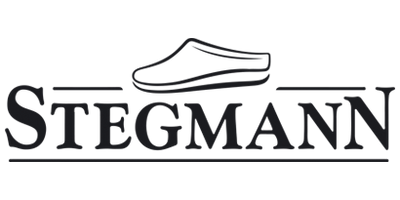Clog & Shoe Care Guide
Through generations of making shoes, we have perfected our methods and modernized our processes to create shoes that have a minimal impact on the environment and last many years. Long-time Stegmann customers regularly report their shoes last 20 years or more.
We believe that’s because we only use the highest quality locally sourced wools and leathers. Our tannery in Portugal is a nationally certified leader in chemical reduction and sustainable production practices. Even our cork/latex soles are made in Austria and Portugal using natural materials. We are proud of the shoes that make it to your doorstep. As part of our collective commitment to live more sustainable lives, we want to help you make our shoes last. Instead of buying new shoes, help your quality shoes last. Keep reading for tips and tricks to repair your shoes.
How to Protect your Cork Soles
We use cork in many of our shoe designs because the material has shock-absorbing qualities that alleviate foot pain attributed to conditions including Plantar Fasciitis. The supportive material molds to the bottom of your feet for customized support of the whole foot. Another major benefit: cork is a sustainable resource. To help this magic material last a long time, our exclusive Cork Sealer is the answer.
How to Use It:
1: Shake the bottle to ensure a smooth consistency.
2: Open up the top, which has a built-in brush attached to it.
3: Brush a thin coat of the sealer onto the cork surface. It will appear white.
4: Wipe away any excess cork sealer from leather or wool upper with a moist towel or washcloth.
5: Allow it to dry for 20 minutes or until the white of the sealer has turned clear.
6: The cork will result in a darker glossier finish. New cork may need two coats to achieve this effect to ensure it’s properly sealed.
How to Protect your Leather Shoes
Our leather shoes are made in Portugal. The high-quality leather is built to last, but a little extra TLC goes a long way. We recommend protecting your leather when you first receive your shoes with the Apple Leather and Suede Protectant Spray. We have tested and approved this specific spray for colorfastness on all Stegmann leather products This powerful repellant forms an invisible protective layer that keeps your products free from water spots, salt stains, body oil, grease, perspiration, coffee, wine, and more.
How to Use It:1: Use a cloth to wipe the surface of your shoes. Make sure no debris, dust, or dirt remains.
2: Take off the top of the spray. Position the shoe 6-9 inches away.
3: Press down on the nozzle and spray the shoes in a sweeping motion. Include the seams when you spray your leather shoes.
4: Let the shoes dry for 30 minutes before touching or wearing them.
5: Reapply as needed. Depending on how often you wear your shoes will determine how often you will need to reapply the spray. We recommend at least once a year.
How to Clean your Wool Clogs
Our wool clogs and shoes are made of both merino wool and locally sourced wools from farms in Europe. Much of this wool is from specialty farmers who produce wool from rare and endangered sheep species. They are right up the road from our manufacturing facilities, which minimizes our footprint. The end result of this farm-to-foot experience is your cozy, supportive Stegmann shoes. The natural wool will attract debris, pet hair, and pills over time, as wool does. They are not machine washable, so to keep your shoes looking fresh and clean, a simple felt care brush will do the trick.
► Watch a video on how to use the wool brush to clean and refresh your clogs
How to use it:
1: Hold the brush firmly in your hand.
2: Brush in one direction.
3: Brush as long as needed to remove all signs of debris and pills.
4: Repeat as often as needed to keep your wool shoes fresh.
How to Repair your Sole if it Detaches
Stegmann clogs are constructed differently than most shoes. Rather than sewing, we adhere the wool upper to the cork or rubber sole. The adhesive is very strong and usually holds for years and years. In some cases, the adhesive and the wool undergo a process called “de-lamination” where the wool may begin to separate from the sole. Many things can cause this - heat, humidity, water, or other factors that can begin to break down the adhesive. This process can also take place between the cork sole and rubber outsole - the repair steps are the same. This doesn’t mean the shoes are defective, it simply means the adhesion has been weakened, and fortunately, it is very simple to fix! When this occurs, we encourage you to use Barge’s All-Purpose Cement.
How to Use It:
Before you start, please read the instructions on the Barge container. Below is our step by step advice.
1: Make sure you are in a well-ventilated area or can open a window.
2: Wipe down the surfaces around the affected area with a dry or damp cloth to ensure no debris will be tracked into the shoe with the glue.
3: Have a few q-tips or a knife as tools to apply the all-purpose cement.
4: Open the top of the Barge’s container and squeeze a small amount onto the q-tip or tool.
5: Separate the affected area as much as possible. Use the tool to push the glue between the sole and upper. Apply to both sides and wait 15 -20 minutes to allow the adhesive to absorb fully to each side.
6: Wipe away any excess glue on the exterior immediately with a damp cloth.
7: Per the Barge instructions: Wait 15-20 minutes to allow the adhesive to cure before applying pressure.
8: Apply pressure: Slide your hand inside of the shoe and press down on the affected area either by setting it on the floor or with the other hand. Press down and hold for 10-15 minutes. You may also gently slide your foot in and stand in the shoe to apply pressure - but do not move or walk.
9.The adhesive will need to cure for several hours at room temperature and low humidity to ensure proper adhesion. If you can clamp or weight the clog to maintain pressure as it cures, we recommend you do so.



How to Clean your Leather Clogs or Shoes
When we source our leather for shoes like the Liesl Chelsea Boot at Stegmann, we try to minimize transport routes where we can. Our leather is sourced and produced in Portugal. The vegetable-tanned leather shoes we create for you are comfortable and durable. They are not invincible, though. When you find stains adding up, it’s time to pause and give your leather shoes a cleaning. We recommended our leather cleaners for smooth leather or suede/nubuck. Shop our Apple Leather Cleaners.
How to use it:
1: Wipe down the surface of your shoes with a dry cloth to remove any extra debris and dirt.
2: Spray the leather cleaner on a soft bristle brush or sponge. Wipe the entire leather upper of the shoe, focusing on the tough stained areas. For an even result, cover the entire leather surface.
3: Follow up with the leather conditioner to prevent the shoe from drying out. Place the conditioner on a sponge and wipe down the entire surface.
4: Allow the area to dry for 30 minutes.
5: Follow up with the Apple Leather Protectant Spray.
Do you have a question or care need you don't see here? Drop us a line and let us know what you're looking for at support@stegmannusa.com


